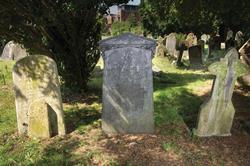As geologist and science writer Nina Morgan discovers faith can sometimes move mountains.
 Sometime during 1760s the magnificently named Welshman, Methusalem Jones, had a dream - a Divine message instructing him to dig in the area around Blaenau Ffestiniog. He obeyed the instruction and established Diphwys Casson, the oldest of the major Welsh slate quarries. As a result he ended up a very rich man. The Diphwys quarry kicked off a major slate industry in North Wales. By the 1820s the quarry was producing around 6000 tons of finished [roofing] slate a year and production took off in an even bigger way when the Ffestiniog narrow gauge railway opened for business in 1836.
Sometime during 1760s the magnificently named Welshman, Methusalem Jones, had a dream - a Divine message instructing him to dig in the area around Blaenau Ffestiniog. He obeyed the instruction and established Diphwys Casson, the oldest of the major Welsh slate quarries. As a result he ended up a very rich man. The Diphwys quarry kicked off a major slate industry in North Wales. By the 1820s the quarry was producing around 6000 tons of finished [roofing] slate a year and production took off in an even bigger way when the Ffestiniog narrow gauge railway opened for business in 1836.
The Welsh slate industry reached its peak in the 1890s when half a million tons of dressed slates were produced and nearly 17,000 men were directly employed. From then on decline set in - capital dried up, and sales dropped as imports grew and roofing tiles became cheaper than slate. Two world wars, coupled with a worldwide depression in between, led to the closure of many slate mines and quarries.
Bat vents
The Diphwys quarry finally closed in 1955. [Wikipedia, Welsh Slate Industry]. But even in the face of strong competition from places such as China, Welsh slate refuses to die. The Penrhyn quarry near Bethesda in North Wales is still producing slates for roofing, and its owners are coming up with innovative new uses for their product – including a range of roof bat vents suitable for all 17 species protected by law.
Meanwhile, Welsh slate – and equivalent deposits on the other side of the Iapetus ocean in what is now North America – became popular for use as gravestones, partly because it could take and hold carved inscriptions well. Welsh Slate headstones dating from the 19th Century can be found in cemeteries throughout the UK and cemeteries located close to the slate quarries in America worked by Welsh quarrymen often contain slate tombstones bearing Welsh inscriptions, as crisp today as when they were carved.
The stone used for Methusalem Jones' own headstone – or indeed the location of his grave – is not known. But a magnificent slab of Welsh slate with an epitaph like Efallai y byddwch yn gorffwys mewn heddwch, eich cymynrodd byw ar (‘May you rest in peace, your legacy lives on’) would certainly be appropriate!
Acknowledgements
This vignette was inspired by articles on Welsh Slate by Barry Hunt published in the November 2013 and April 2015 issues of Natural Stone Specialist. Other sources include the websites http://www.grantonline.com/pugh-family-genealogy/places/slate-quarries/slate-quarries.htm; http://www.welshslate.com and the Wikipedia entry for the Slate Industry in Wales. Further reading about slate in Wales can be found among the many works by ‘y Dyn Llechu’, Alun Richards, at www.richards-slate.co.uk/.
* Nina Morgan is a geologist and science writer based near Oxford. ‘The Geology of Oxford Gravestones’ by Nina Morgan and Philip Powell is now available from the authors priced at £14.99 + postage and packing (£2.80 for up to 4 copies sent to the same address). Contact [email protected] for further information or to order.